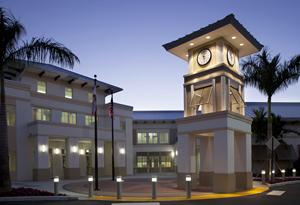Wellington’s Equestrian Preserve Committee met Tuesday, Jan. 17 to continue a workshop on condensing the village’s land development regulations, but also got an update on development applications that the committee will review in coming months.
Committee Chair Jane Cleveland led off the meeting by saying that the committee will have several important items coming up soon.
Cleveland said she had spent some time with Wellington Projects Manager Mike O’Dell and Planning & Zoning Manager David Flinchum sorting out what and when items will be coming before the committee, including a recent application by Equestrian Sport Productions that is currently under staff review.
“We have a healthy agenda the next round of meetings,” she said. “We all know there’s a proposal coming from Equestrian Sport Productions. It hasn’t come to us yet, so we have nothing to think about yet.”
That proposal calls for a series of comp plan and zoning text amendments to create an Equestrian Commercial Zoning District within the Equestrian Overlay Zoning District.
Cleveland reminded members that there should be no discussion among them about the application until it is discussed at an open meeting.
“I have to very, very strongly remind everybody about the Sunshine Law,” she said. “There is going to be a lot of conversation about this in coming weeks, and it is absolutely imperative that none of us talk to each other about it.”
That is also the case for other projects, such as Winding Trails, slated to come to the committee.
Cleveland said that the application could be before the committee in as soon as two weeks, adding that the committee might need to schedule additional meetings in February.
“We’re trying to track all this zoning work, which is substantial, and then we’ve got this other proposal coming our way,” she said.
The committee’s regular meeting included a review of sections of land development regulations, which are being rewritten and condensed by staff.
Flinchum led the discussion, explaining that staff had consolidated the equestrian overlays into one, with accompanying matrices for proposed allowable uses for committee members to suggest the level of review they deemed appropriate.
“Some of them are new uses,” he said, explaining that the committee would be focusing on proposed activities in the Equestrian Preserve Area.
Flinchum said the revisions are intended to make approvals faster and easier to obtain, with some activities that previously required council approval to be done at staff level.
“We learned from this that we’ll try it,” he said. “If there’s no problem and everybody follows the rules and they met the conditions, next year it’s a slam dunk. If they did not follow the rules, then that particular use, that particular property owner, is now required to go up to the next level of review for approval.”
Flinchum said the level of approval depends on the location and type of activity proposed.
“If it’s a big piece of property and your activity is in the middle, and it’s a 10-acre site and you’re not near anybody, it’s a lot different than a 1-acre site and you’ve got people next door who may be impacted,” he said.
Cleveland asked how getting an equestrian permit would be easier.
“You get your equestrian permit for a show, for example, and you’re having the same show every year, how do we assure that it’s going to be easier than it has in the past?” she asked.
Flinchum said that under the reworked regulations, if the activity is a repeat and in the same location and footprint, the permit will be much easier to obtain.
“Let’s say if you have a pad and your tent has always gone there for temporary stabling, to me that should be a one-time approval as long as you’re going back to the same place year after year,” Flinchum said. “If you want to move that tent elsewhere, you should probably come in and update that permit.”
Also, if an activity is intensified, it should be updated, but he added that probably 90 percent of the temporary stabling applications are for private property owners who have the same number of stalls every year.
“That should be staff-level [approval] unless they change it,” Flinchum said. “For your commercial stabling, if you have like 100 stalls and you want multiple tents, that’s always going to be a public hearing unless they come in for a permanent approval.”
Development Review Committee approvals are by staff members and public safety officials who meet to review applications of a more permanent nature, where water and sewer, hydrants and wash areas with drain fields would be used, he said.
“They’re doing stormwater retention, they’re putting in buffering, so they’re doing that investment, so they’re done,” he said. “They’ve done all the permanent improvements.”
Flinchum explained that DRC approvals are different than special permits that are temporary in nature. “When your [special permit] activity ceases, it looks like it did before,” he said. “Everything’s packed up.”
Conditional uses, which require public hearings, must satisfy certain statutory requirements. “Legal notices are sent out and it’s posted on the property with the yellow signs you see sometimes,” Flinchum said.
Conditional uses go through all the advisory boards and the Wellington Village Council for either one or two hearings.
“Those are more intensive and typically a minimum of four months [for approval]; if they’re controversial, six months,” he said.
In addition to upcoming development applications, the Equestrian Preserve Committee will spend the next several months reviewing the proposed rewrite of the land development regulations.








